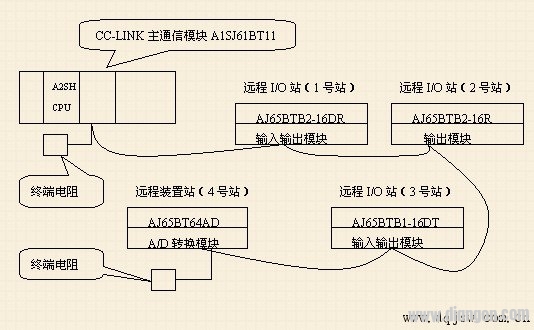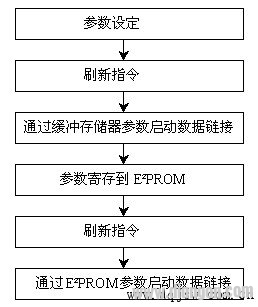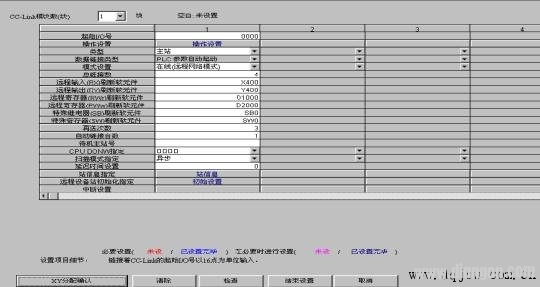CC-Link fieldbus communication initialization setting method - Database & Sql Blog Articles
In the application process of CC-Link fieldbus, the most important part is the communication initialization setting of the system. At present, there are three methods for initial setting CC-Link communication. This paper will compare and analyze these three different initial setting methods, in order to find out how to choose the simplest and most effective communication initialization setting method under different circumstances. This has important practical significance for the use of CC-Link fieldbus in practical engineering. One is to reduce the workload and save time for designers under the premise of ensuring design quality, and the second is to explore whether it can be further developed and tapped. The potential of CC-Link.
As a mobile multi-purpose platform, tablet computers also provide many possibilities for mobile teaching. The touch-based learning & entertainment teaching platform allows children to efficiently improve their academic performance in a relaxed and pleasant atmosphere. Such tablet computers generally integrate two learning sections of various courses and systematic learning functions. Generally, it includes multi-disciplinary high-quality teaching resources. The education tablet has the following main functions: it has the functions of touch screen input, text editing, picture editing, data storage, data management, wired and wireless Internet access that ordinary tablet computers have; Management functions, search methods support manual search, query by keyword, query by time; text and pictures can be scanned and converted into documents to save.
Education Tablet,learning tablet,leaning machine,New learning tablet Jingjiang Gisen Technology Co.,Ltd , https://www.gisentech.com
Brief description of the experimental system In order to facilitate the comparison of communication initialization settings, we first established such a small CC-Link fieldbus system in the laboratory. The overall system configuration is shown in Figure 1. 
After the hardware connection settings are correct, the communication initialization settings can be started.
Use of three setting methods 
Figure 2 communication initialization procedure flow
The first and most basic method is to set the communication initialization parameters by programming. The process of compiling the communication initialization program is shown in Figure 2. First, in the parameter setting section, the number of modules connected to the entire system, the number of retries, the number of automatic return modules, and the operation specification (stop) when the CPU is ä»¥åŠ and the information of each station are written to the corresponding addresses of the memory. The parameters in the buffer memory are sent to the internal registration area after the refresh instruction is executed, thereby starting the data link. If the parameters in the buffer memory can start the data link normally, this means that the communication parameters are set correctly, and the parameters can be registered to the E2PROM by the register command. This is because the parameters of the internal registration area are not saved once the power is turned off, and the parameters in the E2PROM are saved even if the power is turned off. At the same time, the communication parameters must be written to the E2PROM at one time, that is, only when it is initialized. After that, the CPU runs the data link by sending the parameters in the E2PROM to the internal registration area. It is worth noting that if the communication parameters are set incorrectly (such as the parameters are inconsistent with the hardware used by the system, or the parameters are inconsistent with the settings on the hardware), the data link will not start normally, but usually does not show where the error occurred. It is only by yourself that you carefully and patiently check that there is no other way. Conversely, if the communication parameters are set correctly and the settings on the hardware are wrong, the CC-Link communication control component will provide an error message. Generally, the type of error and the error can be found by the diagnostic function of the programming software package.
The second method of communication initial setting is to use the configuration software GX-Configurator for CC-Link configured with CC-Link communication. The configuration software can configure the PLC of the A series and QnA series to realize the setting of communication parameters.
The whole configuration process is very simple. After selecting the master station model, the master station can be set up. After that, the connected slave stations are added one after another, and the slave station settings are made, including the slave station model and its occupied station. The number. The final configuration is shown in Figure 3.
The basic information of each module in the configuration process will be displayed on the configuration completed screen. The whole screen is simple and intuitive, and the system configuration is clear at a glance. However, there was a problem starting the data link after the configuration was completed. 
Figure 3 Configuration completion screen
When "Download master parameter file" is selected, a dialog box pops up asking you to select whether to write the parameters to the E2PROM or the buffer memory. Regardless of whether you choose any of them, the software will prompt "Do you want to execute the data link now?", if you select "Yes", the LED lights of each site indicate normal. However, when the PLC running normally is reset and then re-run, each station has an error. In this case, the configuration file is not actually written to the E2PROM, which means that the configuration software does not have the function of writing parameters to the E2PROM. Therefore, in this case, in order to start the data link using the E2PROM, it is necessary to rewrite the "Parameter Registration to E2PROM" program in the main station, and the data link is normally started by the configuration and programming. Obviously, this method uses the configuration package to set the communication parameters, and then use programming to write these parameters to the E2PROM, which is the last step necessary to complete the data link. Of course, this will bring some inconvenience in actual use, but it can omit the process of writing communication parameters into the buffer storage area after all, and in this sense also brings a lot of convenience to CC-Link users.
The last method is to implement communication parameter setting through CC-Link network parameters. Since this is a new function of the PLC of the small Q series, the A series and QnA series PLCs do not have this function. Therefore, in the experiment of performing this setting method, it is necessary to replace the originally used master module with the Q series PLC.
The entire setup process is quite convenient. As long as the corresponding network parameters are set in the network configuration menu of the GPPW software, the remote I/O signals can be automatically refreshed to the CPU memory, and the initial parameters of the CC-Link remote components can be automatically set. As shown below. If the entire CC-Link fieldbus system consists of a small Q series and 64 remote I/O modules, the initial setup of the communication settings can be done automatically without setting network parameters. 
Figure 4 Comparison and analysis
After using these three different methods, they have a more comprehensive understanding and understanding of their advantages and disadvantages.
It is the most complicated to set up a traditional ladder sequence program to set communication parameters, and it takes a long time to program. And once an error is found during debugging, a correct instruction is needed to find out the error, so there is a lot of work. However, it still has advantages that no other method has. First of all, after compiling the complete set of programs, you can understand the entire setup process very clearly, master how the PLC works, and start the data link. Secondly, the whole programming idea is very clear, and the correct program must be based on the mastery of the use conditions of various devices. Therefore, in this process, the functions of each device can be turned on. Can have a very good understanding and be able to use it skillfully. It is best to start with CC-Link communication designers who are new to beginners and who are interested in getting started.
The biggest advantage of the configuration software used is that it is simple and intuitive. The configuration of the whole system can be clearly seen on the screen, including the number of slave stations connected to the master station, and the specifications and performance of each slave station are clear at a glance. And once an error occurs or the parameters are changed, it can be done very quickly, saving a lot of time and effort. However, it also has one of the biggest drawbacks, that is, it is impossible to register the parameters in the E2PROM. After the reset, the configuration content just written will no longer exist. If the actual situation, the situation on the spot is complicated, you will encounter many unexpected problems. If you need to reset in the middle, the configuration software will be powerless and must be reset and rewritten, which will affect the work progress. Therefore, in this case, the configuration software is used, and the program for writing communication parameters from the buffer storage area to the E2PROM is used to complete the initialization of the entire system. In addition, the configuration software does not currently support small Q series PLCs.
Finally, the method of setting network parameters is simple and effective. As long as a certain amount of parameters are filled in according to the regulations, the complicated and complicated sequence program can be well replaced. When an error occurs or the parameter needs to be modified, it can be completed quickly, as with the configuration software, reducing setup time. However, its shortcoming is that many important details are skipped during the setup process, so that it is impossible to truly grasp the internal operation process of the PLC and be more abstract. For example, after filling in many parameters, although the data link of each station can be executed normally, it is impossible to understand how these parameters are related, how to make effect, and how to make the data link of each station be completed normally.
In short, the three methods have their own advantages and are suitable for users to choose between different purposes and different situations (such as different PLC series). If you want to clearly understand the internal operation of the PLC, you can use the programming method; if you want to save the designer's workload and reduce the design debugging time, you can use the network parameter method. The method of configuring the software can be considered as a combination of the two. In practical applications, the method of initializing communication settings through network parameters is one of the most superior methods. It is convenient, reliable, and comprehensive in function. It has already satisfactorily met the needs of the system and shortened the CC-Link scene. The time when the bus is designed and debugged in various industrial control situations reduces the difficulty of the work and facilitates the subsequent troubleshooting and maintenance. Unfortunately, it only works with small Q series PLCs.
With the development of communication technology and control technology, it is believed that fieldbus technology and related technologies will develop more mature and perfect in the near future, and a more convenient and powerful communication setting method will emerge, so that the future scene will be Bus technology is better applied to the field.